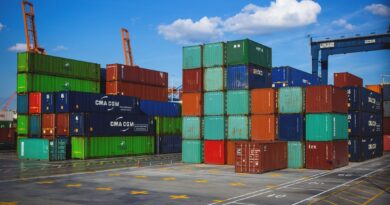Economic Diversification and its Effect on the Canadian Dollar
In the realm of global economics, currency value is a crucial indicator of a country’s economic health and stability. For Canada, a nation with a rich tapestry of natural resources, the performance of its currency, the Canadian dollar (CAD), is heavily influenced by various factors. Among these factors, economic diversification stands out as a significant driver with far-reaching implications. This article explores the concept of economic diversification and its profound effects on the Canadian dollar.
Understanding Economic Diversification
Economic diversification refers to the process of expanding a country’s economy by broadening the range of industries and sectors beyond its traditional strengths. For Canada, historically known for its abundant natural resources such as oil, minerals, and timber, economic diversification represents a strategic shift towards developing knowledge-based industries, services, and technology sectors.
The Need for Economic Diversification in Canada
Canada’s reliance on natural resource industries has exposed its economy to the volatility of commodity prices and global market fluctuations. The fluctuations in oil prices, for instance, have had a significant impact on the Canadian dollar in the past. Economic diversification is, therefore, seen as a means to mitigate these vulnerabilities and foster long-term economic stability.
Effect of Economic Diversification on the Canadian Dollar
- Reduced Dependency on Commodity Prices: Economic diversification lessens Canada’s dependence on commodity exports, thereby reducing the sensitivity of the Canadian dollar to fluctuations in commodity prices. As the economy becomes more diversified, the CAD is less susceptible to sudden declines in resource prices, offering greater stability in its valuation.
- Increased Foreign Investment: Diversification attracts foreign investment in non-resource sectors, such as technology, manufacturing, and services. This influx of investment boosts economic activity, strengthens the CAD, and enhances Canada’s overall economic resilience.
- Enhanced Trade Balance: Economic diversification fosters the development of export-oriented industries beyond traditional resources, leading to a more balanced trade portfolio. A diversified export base reduces trade imbalances and supports a more favorable exchange rate for the Canadian dollar.
- Improved Economic Resilience: By expanding into knowledge-based industries and services, Canada builds a more resilient economy capable of withstanding global economic shocks. This resilience bolsters investor confidence, contributing to a stable and robust Canadian dollar.
- Innovation and Productivity Growth: Economic diversification fosters innovation and productivity growth in non-resource sectors, driving long-term economic prosperity. The development of high-value-added industries enhances Canada’s competitiveness in the global market, positively impacting the valuation of the CAD.
Case Study: The Role of Technology in Economic Diversification
The technology sector exemplifies the transformative impact of economic diversification on the Canadian economy and its currency. Canada has emerged as a global leader in technology and innovation, with thriving tech hubs in cities like Toronto, Vancouver, and Montreal.
The growth of the tech industry has significantly contributed to economic diversification by creating high-value jobs, attracting skilled talent, and fostering entrepreneurship. This diversification has helped reduce Canada’s reliance on traditional resource sectors and has bolstered the Canadian dollar through increased foreign investment and export of technology products and services.
Challenges and Considerations
Despite the benefits, economic diversification poses certain challenges and considerations for Canada:
- Transition Costs: Shifting towards a more diversified economy requires significant investments in infrastructure, education, and research and development. Managing the transition from resource-based industries to knowledge-based sectors involves upfront costs and adjustments.
- Global Competition: Canada faces stiff competition from other countries in emerging industries such as technology and renewable energy. Maintaining competitiveness in these sectors requires continuous innovation, skilled workforce development, and supportive government policies.
- Regional Disparities: Economic diversification may exacerbate regional disparities within Canada, with certain provinces benefiting more from the transition than others. Addressing these disparities requires targeted policies and investments to ensure inclusive growth across all regions.

Economic diversification plays a pivotal role in shaping the stability and resilience of the Canadian dollar. By reducing dependency on commodity prices, attracting foreign investment, improving trade balance, and fostering innovation, diversification enhances the strength and stability of the CAD. As Canada continues its journey towards a more diversified economy, strategic investments, innovation, and inclusive growth will be key in ensuring sustained economic prosperity and a robust Canadian dollar in the global arena.



